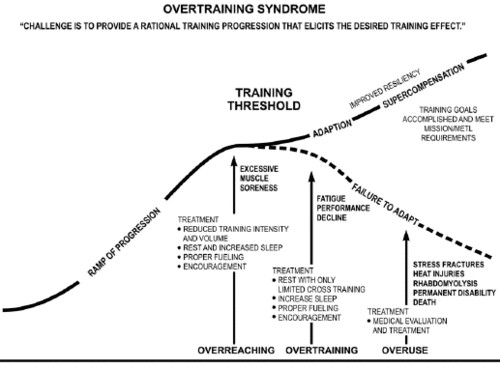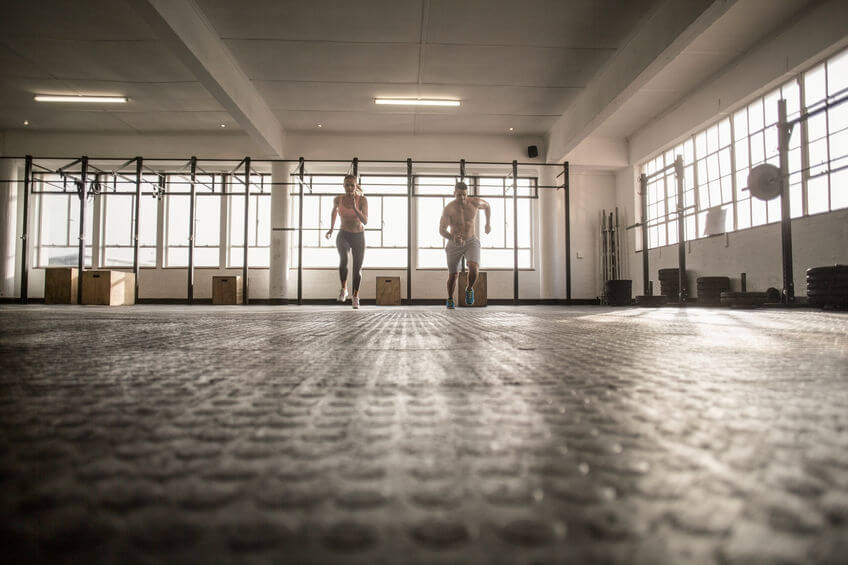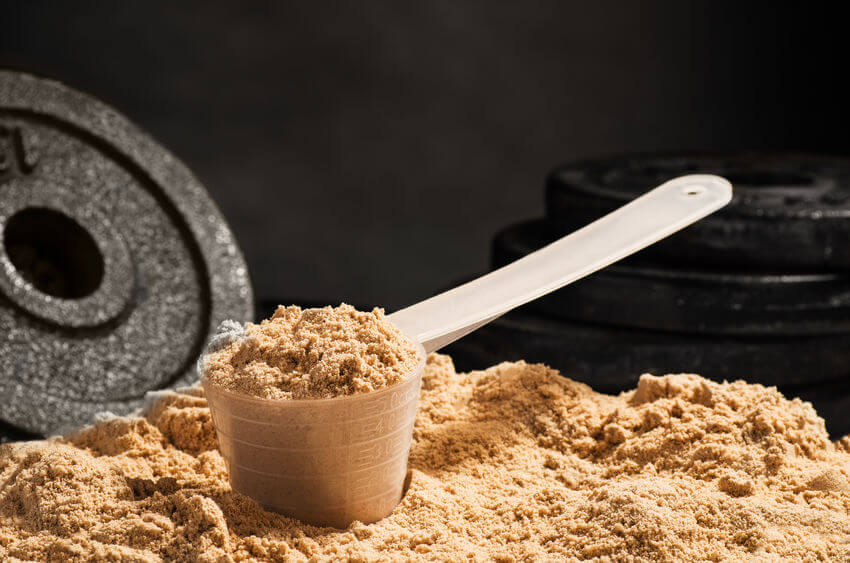How to Recover from CrossFit the Right Way? Your CrossFit Recovery Guide!
ALL your Gains happen during RECOVERY, not the workout!
Not allowing your body time to recover may be robbing yourself of superior gains in strength, endurance and muscle size.
It’s true.
Training without allowing your body time to recovery leads to overtraining.
Overtraining does NOT lead to better performance!
Overtraining can actually hurt your performance.
Do you want to know how to recover from CrossFit the right way?
Focus on these three principles and you will be on the road to recovery, and better performance.
Contents
Why YOU Need Recovery from CrossFit
Your training gains are only as good as your recovery.
You cannot gain strength or build muscle or increase endurance while you train. The building and repair process that leads to gains happens during recovery.
During training, you are sending your body a message: the message is it needs to fortify itself to be better prepared next time!
If you never give your body a chance to build recover and rest, it cannot make itself stronger, last longer and be stronger because it simply does not have the time it needs to rebuild.
Can “Overtraining” Hurt Performance?
Training too frequently without enough time for recovery can put your body and your performance at risk.
Overtraining, also known as “Non Functional Overreaching” eventually leads to what researchers and sports scientists call overtraining syndrome (OTS).
OTS is when your balance between training, nutrition and rest and recovery are out of whack because you are training too much.
OTS leads to decreased performance and fatigue.
Most CrossFit athletes train to increase performance and do not welcome fatigue, so it is easy to see why overtraining is harmful.
How to Know if You are Overtraining
There are some clues that let you know you need to take it easy.
Some common signs of overtraining are:
- You may start having trouble sleeping.
- If you lose your appetite, even when you know your body needs fuel.
- You are not motivated to workout, or do much of anything, for that matter, when you previously had a lot of enthusiasm.
- Your sex drive is zapped. Gone. Zilch. Nada.
- Feeling sore, tight and crappy constantly.
- Your mood changes for the worse for a prolonged period of time. OTS leads to mood disturbances.
Picture a bell curve. Training performs on a bell curve.
At first, training leads to adaption and supercompensation, but only to a point.
At that point performance levels out. If you train past that point you will begin to see diminishing gains and finally the curve heads back down and you end up with negative performance.

Want to Know How to Recover from CrossFit? Focus on These 3 Areas
1. The Best FOOD for CrossFit Recovery
Can you eat your way to recovery? Maybe not, but the food is a big part of the recovery equation.
Intense training depletes glycogen stores which can be restored by carbs from food.
Your body needs protein to build and repair muscle during recovery.
Check out these foods and diet plan and find out how you can eat your way to a faster recovery.
Bananas
Bananas have two components that make them a great recovery food. They have a lot of carbs to replenish glycogen stores, and they are rich in the mineral potassium, an important electrolyte you lose when you sweat.
Plus they are yummy and super easy to pack and carry wherever.
Protein Shakes
Whether you opt for fast digesting whey or slow release casein protein, a protein shake is a fast and easy way to help your body as it begins to rebuild damaged muscle tissue.
Eggs
Eggs provide about 6 grams of protein each. Eggs also supply Leucine, the strongest of the three branched chain amino acids at inducing mTOR, which in turn spurs muscle synthesis.
It’s good to get plenty of leucine in your diet.
Dark colored fruits
Cherries, Acai, Pomegranate and other Polyphenol rich fruits and other dark colored fruits are a good food choice.
These dark fruits have been shown to reduce DOMS, the muscle soreness you get after a hard workout.
According to one review:
Looking for more food ideas?
Check out these CrossFit Nutrition Plans to get ideas on how to incorporate these foods and more as a part of your diet every day.
2. The Best Supplements for CrossFit Recovery
Creatine
Creatine is necessary for the creation of ATP, our cells energy source, Creatine is one of the most well studied fitness supplements of all time, and for a good reason.
Creatine has been shown to:
- Increase Power output
- Increase lean muscle mass
- Decrease fatigue and increase fatigue resistance
- Decrease muscle damage
- Increase muscular endurance
- Increase sense of well being
- Slight increase in testosterone
- Decrease catabolism (muscle wasting)
With all the benefits creatine offers the athlete, it’s no wonder this supplement is so popular.
Fish Oil
Several studies found that fish oil can reduce the soreness associated with DOMS. These studies used anywhere from 2 to 6 grams of fish oil per day.
Fish oil has also been shown to reduce depression, lower blood pressure, reduce inflammation and lower cortisol.
Fish oil is one of the best supplements an athlete can take and if you do not get much fish in your diet, you really should consider supplementing.
Just be sure to get a high quality, de-odorized brand known for purity, or else you may end up with fish burps. Not fun.
Magnesium
Magnesium is one of my favorite supplements for recovery.
The reason magnesium is so great for recovery is because magnesium is so great for sleep!
Sleep is one of the most important factors of a good recovery.
Magnesium is an electrolyte and gets depleted with sweat. If you are like many American’s, you do not get enough magnesium from diet alone, and as an athlete, you need even more of this essential mineral than others.
As a fellow athlete who uses magnesium, I feel I owe it to you to give you a few warnings.
First:
Be careful what type of magnesium you supplement with. Too much of the wrong type of magnesium causes diarrhea.
Good Types:
- Magnesium threonate
- Magnesium glycinate
- Magnsium malate
- Magnesium orotate
Bad Types:
- Magnesium citrate
- Magnesium hydroxide
- Magnesium Oxide
- Magnesium Carbonate
Second:
Magnesium can make you feel sleepy. It makes me tired just about every time I take it. Take Magnesium before bed, when you have 8 hours available for sleep.
You may notice that magnesium is found in a lot of night time fat burning or recovery supplements. Now you know one reason why, because it makes you sleepy.
Recovery drinks
I don’t have to tell you that intense workouts involve a lot of sweat. As that sweat leaves your body, so do important minerals and electrolytes.
That is where recovery drinks can be a very convenient way to replenish what you lost through hard training.
3. The Best Practices for CrossFit Recovery
Number one Recovery tool: SLEEP
Your body does a large part of its repair work only while you sleep. Sleep is so important for the following reasons.
Human Growth Hormone
Human Growth Hormone is released during stage 3 and 4 of sleep. This is when the body does its repair building and recovery.
Human Growth Hormone plays a key role in muscle and cell repair. HGH is also anti-aging and helps keep body fat low.
Faster and more accurate
One Stanford sleep Study showed that increasing sleep time can improve physical performance. Trained athletes who were studied after extending their sleeping time found they performed faster and were more accurate.
Intuitively, I am willing to bet you already know this is true.
We have all had a crappy, restless night of sleep and the next day, you feel completely off your game. Slow, dull and out of it.
On the other hand, I am sure you have also had days where you slept great and felt like a champ the next day.
We all know sleep is important, but like all health habits, we need to mindfully practice them every day.
Sleep timing
Human growth hormone is at its highest level of production between midnight and 2 am.
Testosterone production is at its highest between 6 am and 8 am.
So you should be sleeping during the critical times of midnight and 8 am.
Foam rolling using a foam roller
What exactly is Foam Rolling and Why Should I Roll?
Foam rolling is a type of massage using a foam roller which you slowly roll your body over to give yourself a deep tissue massage.
Foam rollers come in different diameters, textures and lengths to accommodate different areas of the body.
Proponents say that rolling over these foam rollers pre and post workout is supposed to move oxygenated blood through the muscle and muscle fascia which is how it speeds recovery.
Studies show foam rolling is helpful for alleviating delayed onset muscle soreness making it a good recovery tool after an intense bout of physical activity.
Looking for a good foam roller? Check here.
Contrast Baths – Water Immersion Therapy
Contrast baths, where the athlete alternates or cycles between cold and hot water, is shown to improve at least one indicator of recovery – lactate elimination.
Why does Lactate elimination speed up recovery?
High intensity exercise causes a buildup of lactate in the blood. During intense exercise, your bodies’ first choice to create energy is to use oxygen to break down glucose.
But, when oxygen is not available, your body adapts and creates lactate, which it can use to create energy in the absence of sufficient oxygen.
This lactate created by your body starts to build up because your body creates it faster than it can be eliminated.
Lactate buildup in your blood makes you feel exhausted, your muscles burn, you may get cramps or even feel nauseous.
Still, in order to recover and reduce the effects of lactate buildup in your blood, eliminating the excess lactate from your blood quickly is important.
That’s where a contrast bath, done immediately after an intense workout, helps.
Research shows that alternating between hot water at 36 °C and cold water at 12 °C significantly hastens the removal of lactate from blood.
The Cliff Note Version
Want to know how to recover from CrossFit using the most simple and effective methods?
Here is all you need to do.
To Sum it all up, active recovery, along with good sleep are the two most effective methods of recovery.
If all you do for recovery are just these two things, you are well on your way to getting your body ready for the next WOD.
Don’t forget to sign up for the Garage gym power newsletter. All we need to get your registered is your email address.
In return, you will get access to lots of free goodies like special guides, PDF resources and content not available to others.






